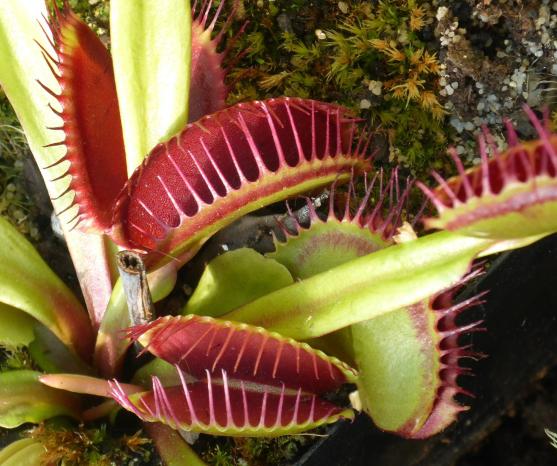At AllThingsNature, we're committed to delivering accurate, trustworthy information. Our expert-authored content is rigorously fact-checked and sourced from credible authorities. Discover how we uphold the highest standards in providing you with reliable knowledge.
Do Plants Have Any Mathematical Aptitude?
Hollywood has produced plenty of scary movies about flora attacking people, but none has given a plant the power inherent in the Venus flytrap: the ability to count.
The carnivorous plant that catches its prey (usually flies and other airborne insects) in a mouth-like set of leaves doesn't just shut its trap every time something touches the fine hairs on those leaves. Instead, a scientific team led by Dr. Rainer Hedrich of Germany's University of Würzburg have proven that the plant "counts" before it commits to certain actions. It closes on prey only if the hairs are touched at least twice in a 20-second span. Also notably, it bases its digestive process -- releasing the chemicals inside the trap that dissolve the prey -- on how many times it receives electrical signals from the trap.

In other words, the more times the captured creature tries to escape, the larger it believes the creature is and the more digestive enzymes it produces. Because plants don't have nervous systems, they rely on electrical signals to determine their behavior. "A single cell can be electrically excited," Hedrich said.
Other scary plants:
- Some carnivorous plants use tentacles to catch prey; one species of sundew catches prey on its tentacles, which then fling the prey inward to be eaten.
- Butterworts produce a sticky goo that covers their leaves, catching any insects that happen to land on a leaf.
- Most of the approximately 600 types of carnivorous plants live in areas where they can't get nutrients from the soil, thus the need to catch living prey.
Frequently Asked Questions
Can plants actually perform mathematical calculations?
While plants don't "calculate" in the human sense, they exhibit behaviors that suggest a form of mathematical understanding. For instance, some plants manage their energy reserves during the night by dividing them in a way that ensures they last until dawn, which researchers liken to a form of arithmetic. This demonstrates an innate ability to modulate resources in a mathematically relevant manner.
How do plants use mathematics in their growth patterns?
Plants utilize mathematical patterns, such as the Fibonacci sequence, in their growth. This is evident in the arrangement of leaves, seeds, and even the growth of branches. These patterns maximize exposure to sunlight and efficiency in seed dispersal. According to studies, such arrangements allow for optimal packing and resource distribution, which is crucial for survival.
Do plants show any understanding of numbers or counting?
Plants don't "understand" numbers in the way animals might, but they do exhibit counting mechanisms. The Venus flytrap, for example, counts chemical signals generated by its prey to avoid false alarms and only closes when a certain threshold is reached. This indicates a basic form of counting that aids in their survival.
What is the significance of the Fibonacci sequence in plants?
The Fibonacci sequence is significant in plants because it frequently appears in their natural structures, such as the spiral patterns of pinecones and sunflowers. This sequence, where each number is the sum of the two preceding ones, results in a highly efficient packing and growth pattern, allowing for maximum light capture and optimal spacing of seeds for dispersal.
Are there any experiments that demonstrate mathematical abilities in plants?
Experiments have shown that plants can adjust their rate of starch consumption during the night to avoid starvation before dawn, which suggests a form of mathematical ability. Researchers have observed that plants divide their starch reserves by the number of hours until daylight, ensuring a consistent supply of energy throughout the night.
How does the study of plant mathematics benefit humans?
Understanding plant mathematics can lead to advancements in agriculture and horticulture by optimizing planting patterns and improving crop yields. It also inspires biomimetic designs in technology and architecture, where efficiency and sustainability are paramount. Moreover, it deepens our comprehension of biological processes and the complexity of life on Earth.
AS FEATURED ON:
AS FEATURED ON:











Discuss this Article
Post your comments